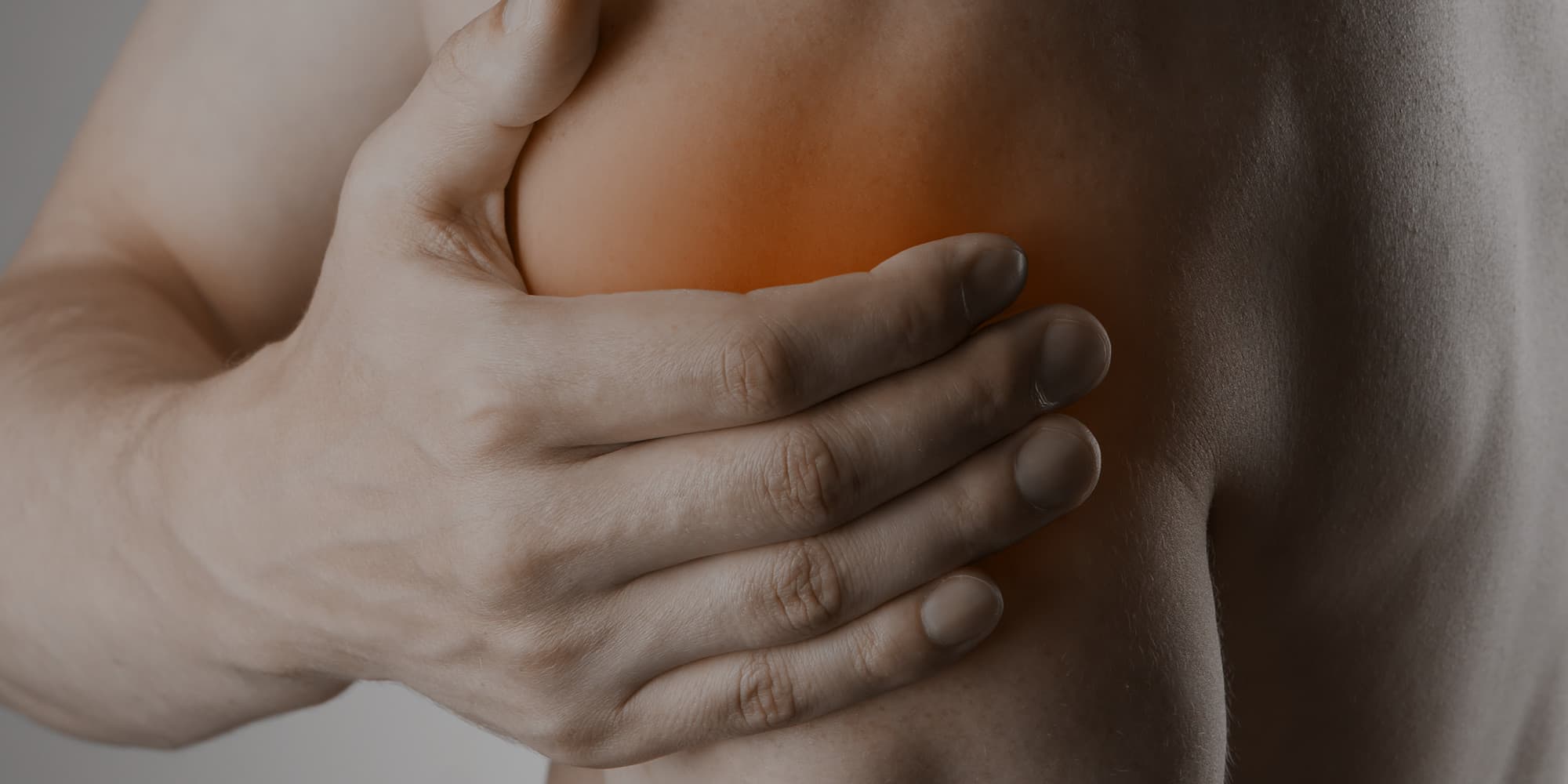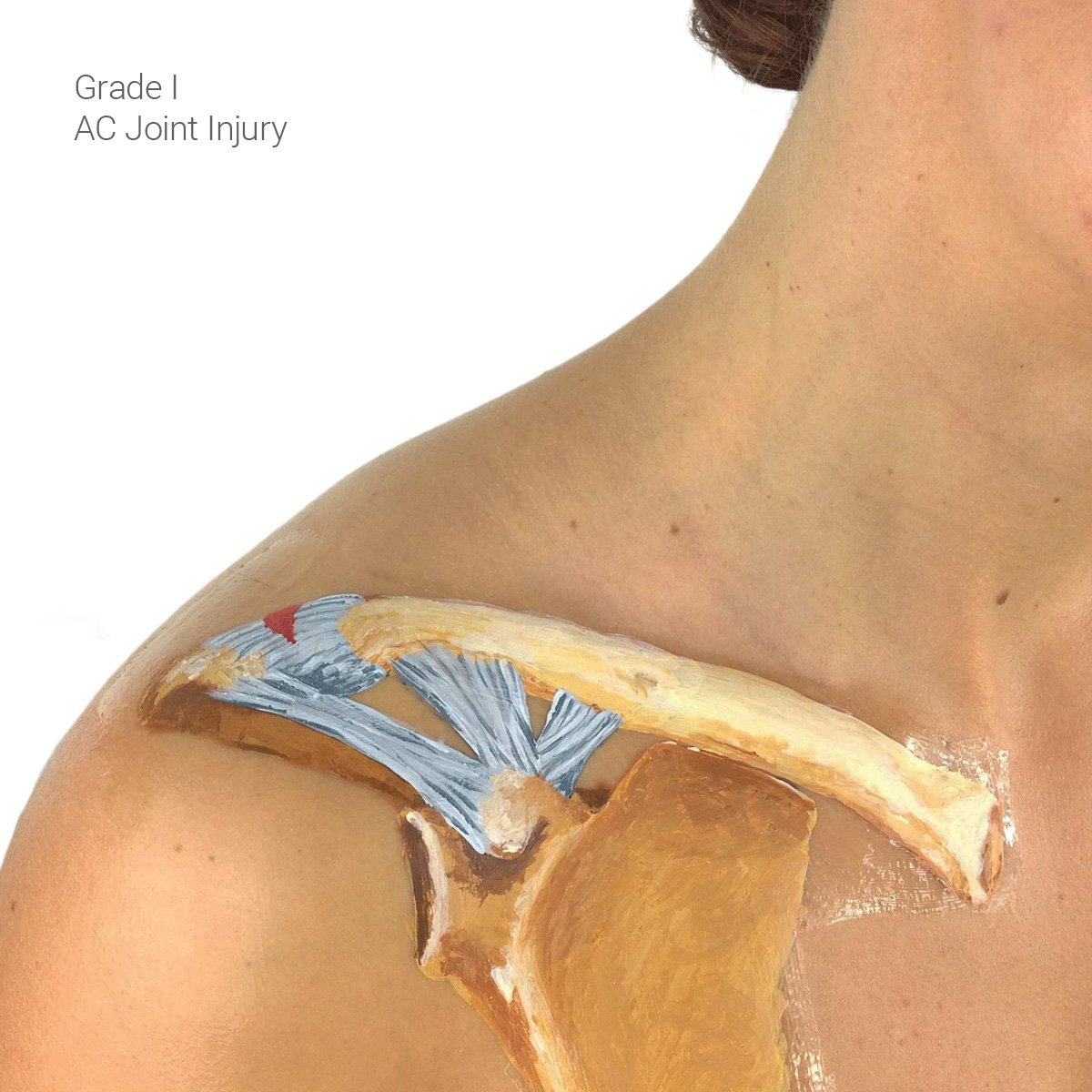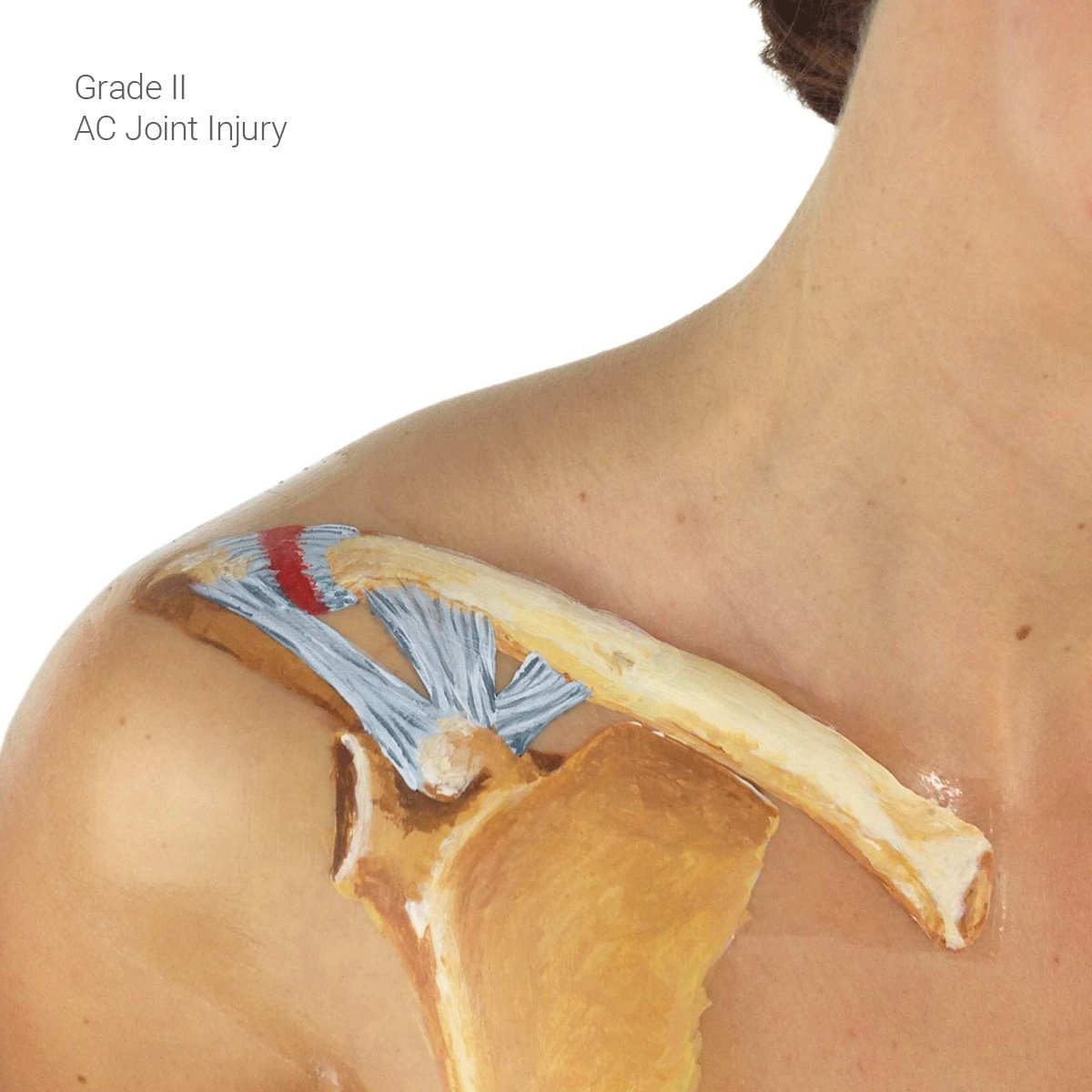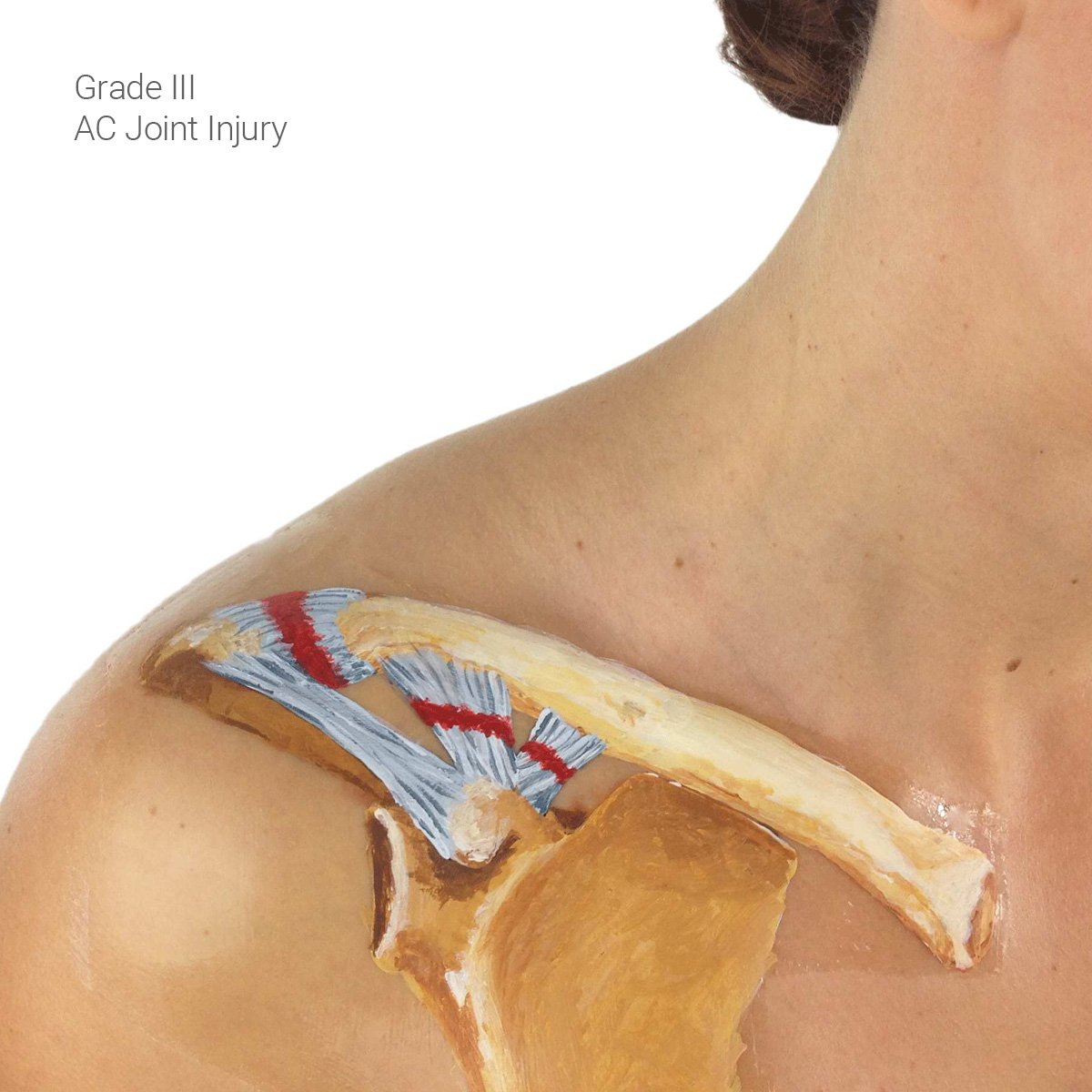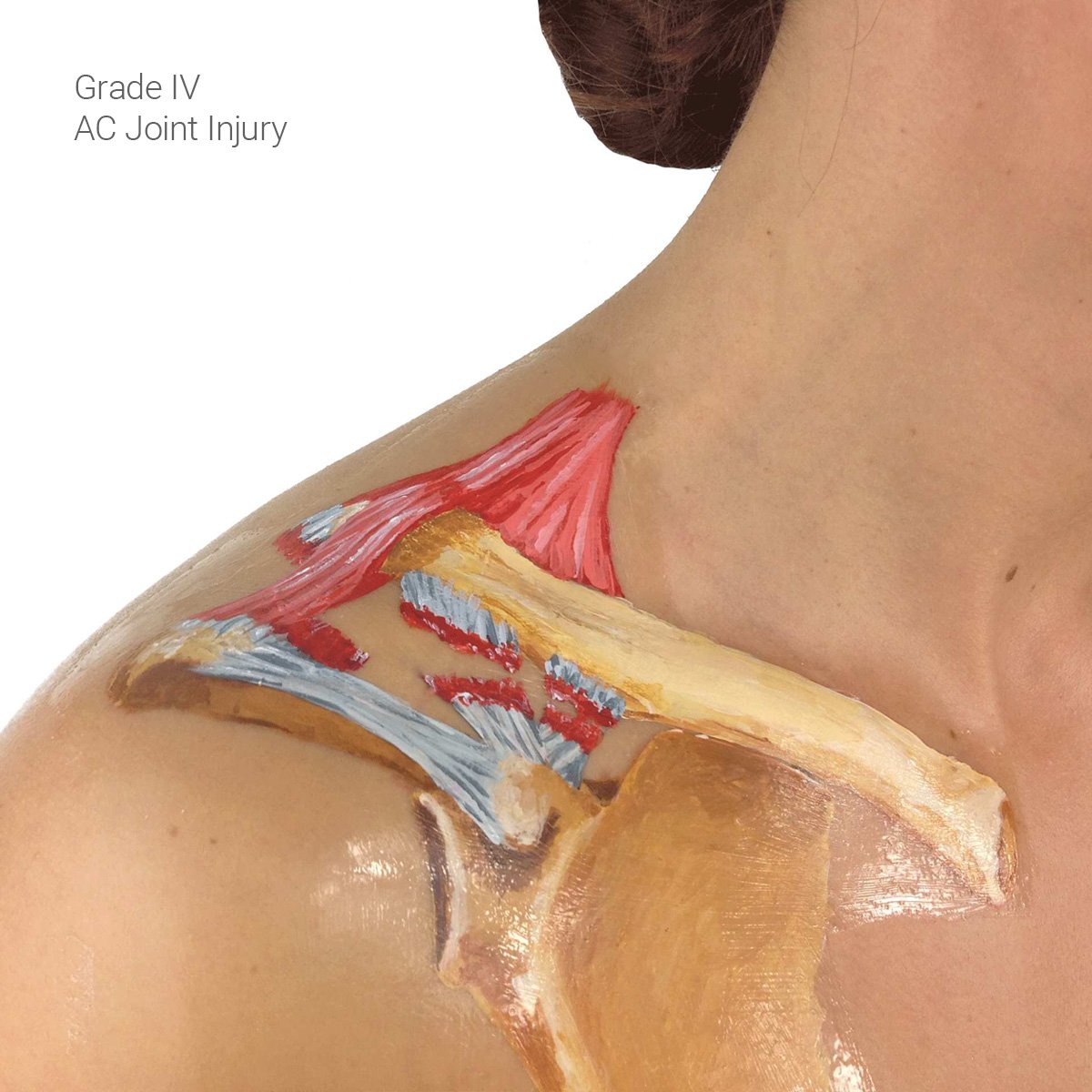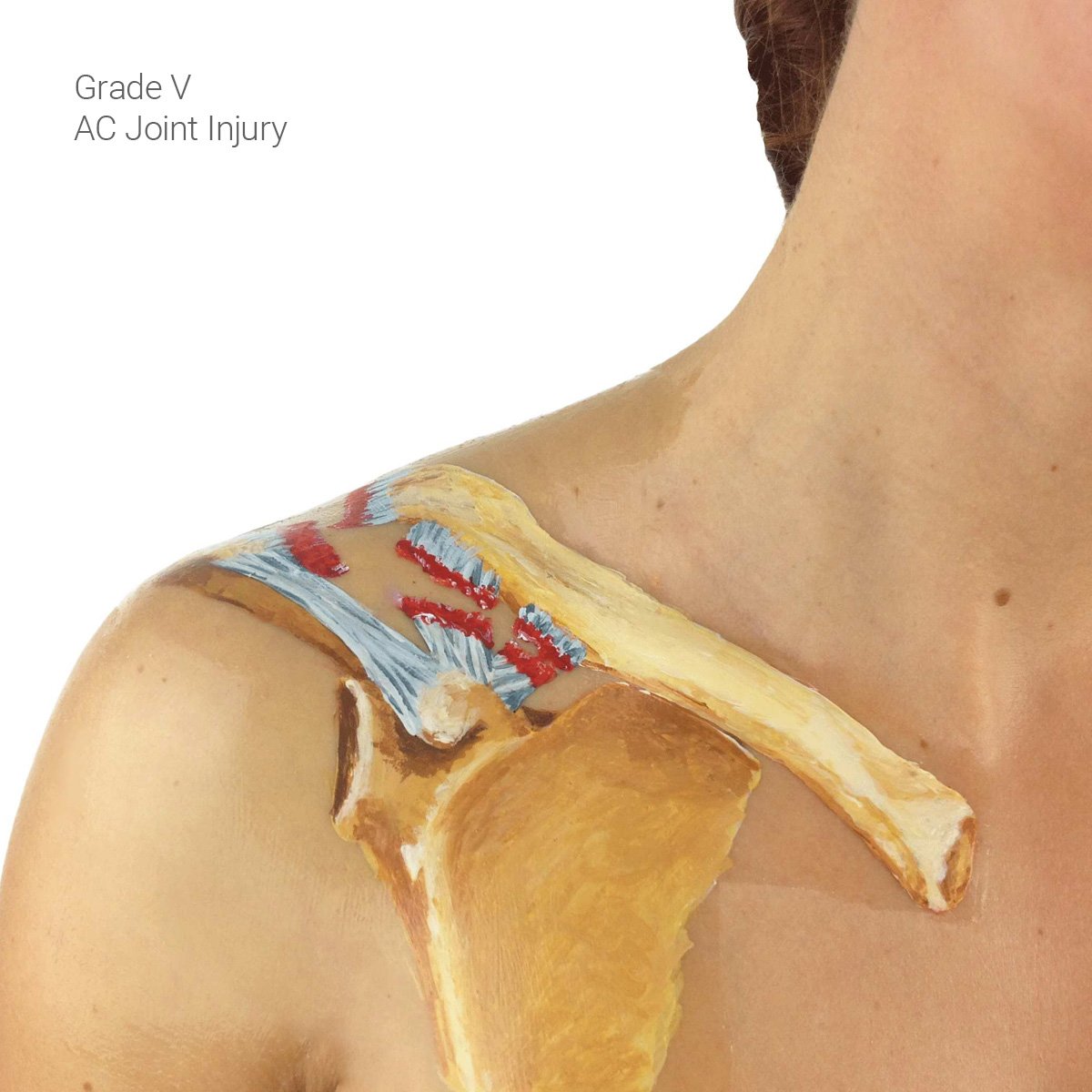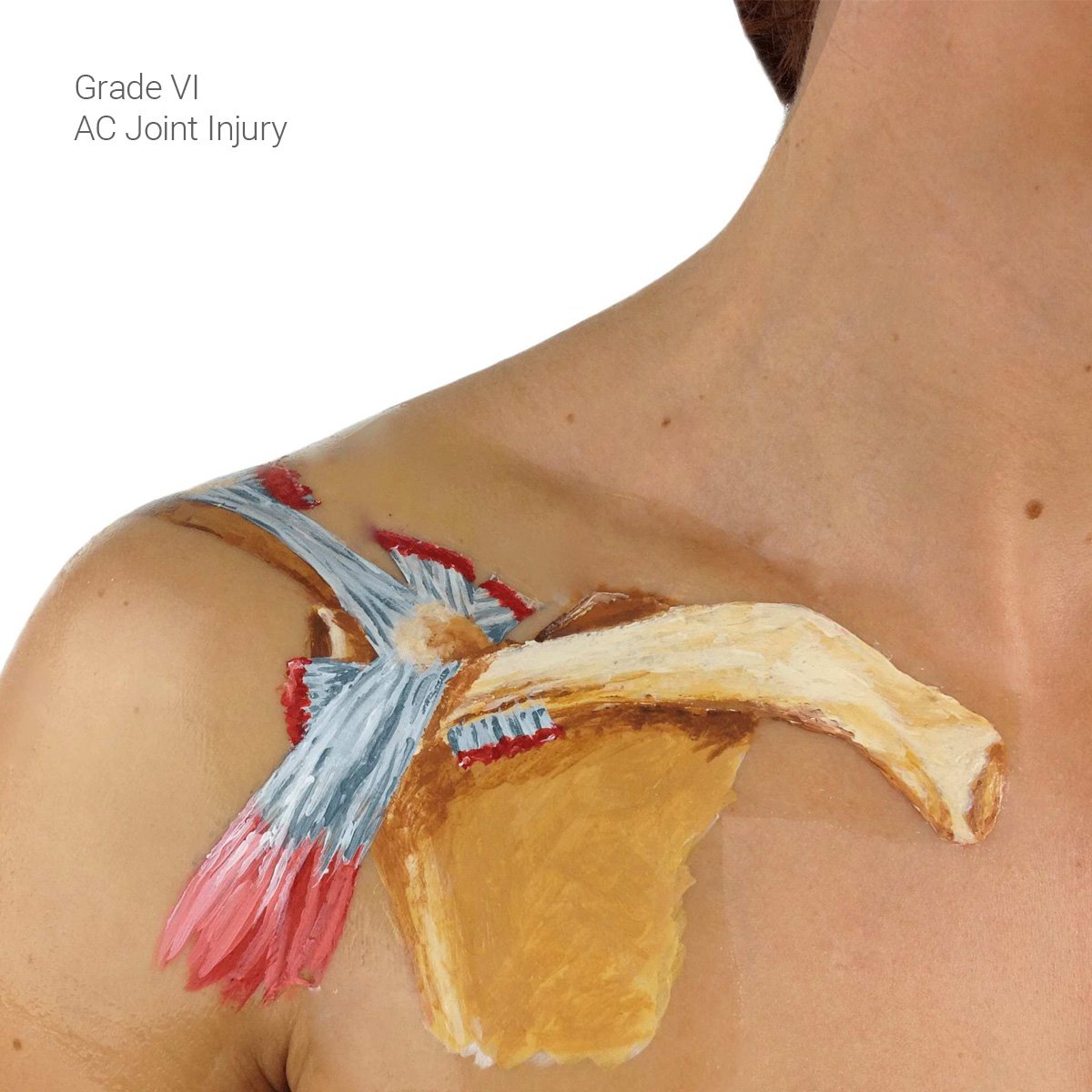Non Surgical
Treatment for an AC joint injury will initially involve rest and support of the shoulder joint, application of a cold compress, and often anti-inflammatory medication to reduce swelling and pain. For less severe injuries, grades I, II, this initial treatment as well as physical therapy is usually sufficient enough for the person to fully recover within four weeks to four months. For grade III injuries surgery may be required if recovery is too slow. Mr. Durrant may choose to see if the shoulder will recover with non-surgical treatment before operating on the injured shoulder. For more severe, grade IV, V, and VI, injuries surgery is almost always required.
Surgical
Surgical treatment of AC joint injuries aims to stabilize the clavicle into the correct position. Sometimes arthroscopic surgery is sufficient, where the end of the clavicle is removed or resected. In moderate injuries this procedure is sometimes enough to ease the pain and discomfort in the shoulder, and regain full mobility of the joint. However for more severe injuries, a combination of arthroscopic and open surgery is likely to be required.
Mr. Durrant uses a procedure to reconstruct the ligaments that secure the AC joint. A hamstring tendon or an artificial graft is used to reconstruct the ligaments as the damaged ligaments are usually not repairable. This then provides greater stability for the AC joint and aims to eliminate pain.
Your recovery from AC Joint surgery depends on the severity of the injury. Generally patients will experience a greater range of movement of the shoulder and less pain within about three weeks. The recovery process will continue for the next three months, where significant mobility and very little pain should be experience. Within the next six to nine months after surgery, the shoulder should fully recover, regaining its full strength.
Mr. Durrant has extensive experience in dealing with mild and severe AC joint injuries. He is very well versed with the advancements made in shoulder surgery over the past decade and performs much of his shoulder surgery via arthroscopic, or keyhole, surgical procedure. Arthroscopic surgery is a less invasive procedure which offers a faster recovery time and less visual scarring compared to traditional open surgery. Whether your AC joint injury is mild or severe, Mr. Durrant is able to correctly diagnose and provide effective treatment for your AC joint injury.

